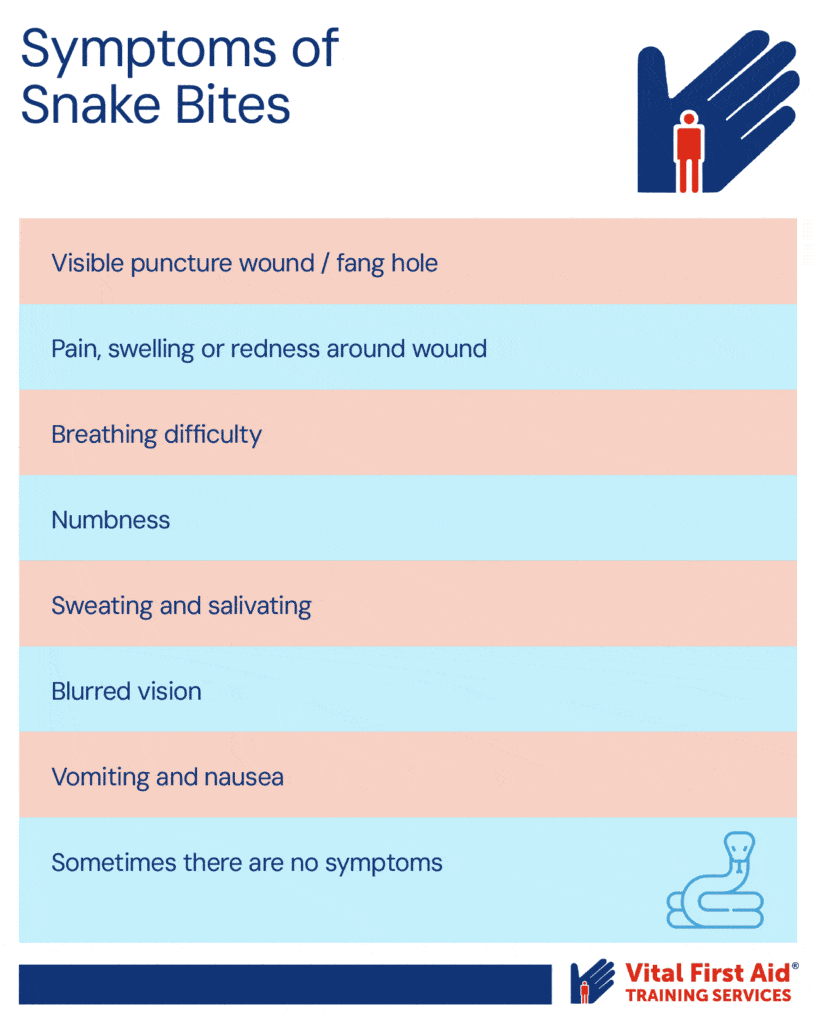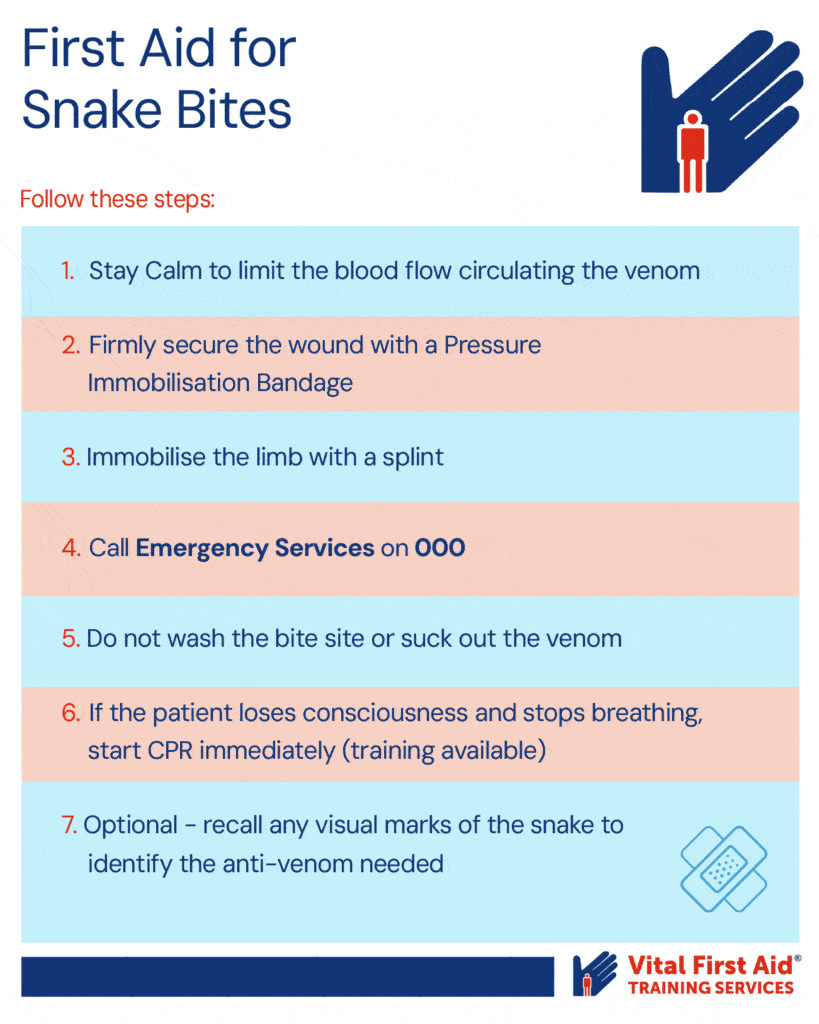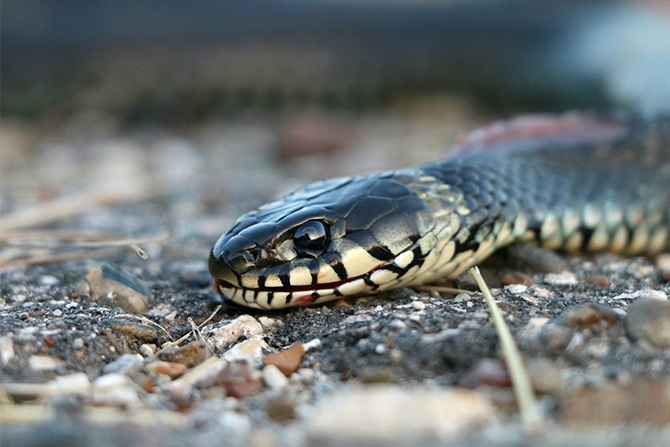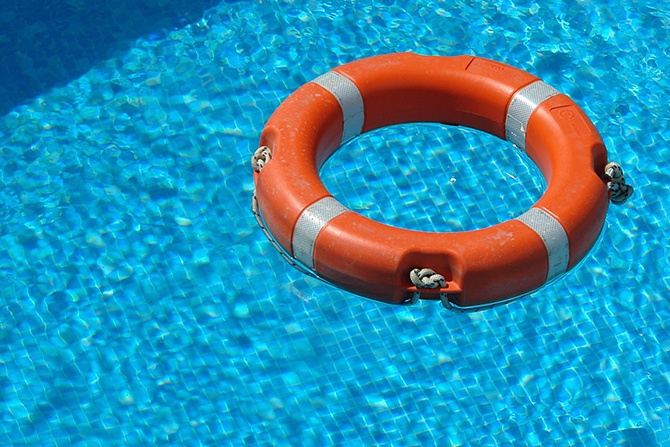Quick Facts
- Australia is home to roughly 100 species of venomous snakes
- There are over 3,000 reported snake bites in Australia annually
- On average, 2-4 deaths are recorded from snake bites annually in Australia
For immediate action, follow the first aid steps below:
- Limit blood flow and increase stress circulating the venom
- Firmly secure the wound with a Pressure Immobilisation bandage and immobilise the limb with a splint
- Call 000
- DO NOT wash the bite site or suck out the venom
- If patient is unconscious and stops breathing, start CPR immediately
See in-depth first aid steps for snake bites here.
Knowing exactly how to provide first aid treatment for an unexpected snake bite today can help you to save someone’s life tomorrow (possibly your own). The vital, life-saving skill of applying snake bite first aid isn’t difficult to master. It simply requires you to be prepared. Your best option is to complete a nationally recognised first aid course. In the meantime, let’s get you instantly ready for a sudden snake bite:
Australia’s Dangerous Wildlife
Australia is filled with a huge variety of beautiful but dangerous wildlife – we share our space with the top three most venomous snakes in the world! Our country is home to around 100 venomous snakes including the Red-bellied black snake, Eastern and Western brown snakes, and Tiger snake. If you meet one of these guys you need to know how to react! Even if you find a snake that is apparently not venomous, never assume it is harmless.
As the weather grows warmer, many Australian snakes cease brumating (waking up from a long period of winter hibernation) and become more active in suburban and rural environments. For example, the common Red-bellied black snake is often found exploring residential areas in coastal New South Wales.
Although snake bites are rare and can often be avoided, it’s important you know the facts and how to apply bite treatment if you are unfortunately bitten by a startled or aggressive snake.
Australian Snake Bites: The Facts
There are over 3,000 reported snake bites in Australia every year (Royal Flying Doctor Service), but the number of nationwide fatalities is only 2-4 on average annually. The majority of bites are reported to occur on the upper and lower limbs and – rather interestingly – most bite victims are men in their 30s… This should put things in perspective, as learning how to treat a bite could have the very real advantage of saving one of your mates!
VITAL TIP: When in the Aussie bush, ALWAYS carry a Pressure Immobilisation bandage ($6 on average) on/near you. This could be the difference between a life saved and a life lost.
Australian Snake Bites: The Symptoms to Spot
If you’re walking, hiking, gardening or generally living in Australia, you should complete a first aid training course and familiarise yourself with the symptoms of a snake bite:
- Visible puncture wound / fang hole (don’t wash it!)
- Pain, swelling or redness around wound (watch if it spreads)
- Breathing difficulty (keep victim calm)
- Numbness
- Sweating and salivating
- Blurred vision
- Vomiting and nausea
- Sometimes there are no symptoms – still seek help.

What to do if you’re bitten by a snake?
If you, or someone in your group, has a suspected snake bite, you need to utilise first aid immediately. In order of priority:
- STAY CALM: limit blood flow and increased stress circulating the venom
- CRITICAL: firmly secure the wound with a Pressure Immobilisation bandage and immobilise the limb with a splint
- Call the Emergency Service on 000
- Don’t wash the bite site or suck out the venom
- If the patient loses consciousness and stops breathing, start CPR immediately (training available)
- OPTIONAL: recall any visual marks of the snake to identify the anti-venom needed.

Remember to respect our snakes
Would you know how to act when encountering a wild snake on a bush walk or at your home? Simply act like a tree – stand still.
Although snakes can present a danger to us, they are still a valued part of our natural environment and shouldn’t be unnecessarily harmed, such as deliberately driving a car over a roadside snake. If you spot a snake on your walking path – stand completely still like a tree. Interactions with snakes are rare, as they’re not great fans of human company and tend to avoid us! Avoid walking through leaf litter and thick bush in the warm months,stick to worn paths, walk calmly, and stay alert for any rustling. You’ll usually find it’s just a lizard!
Remember: Treating a snake bite is a simple case of managing the emergency situation in a calm, professional and well-practiced manner. Taking Vital First Aid’s nationally recognised first aid course will teach you the valuable knowledge needed to potentially save a life.
Courses are available throughout Sydney, Newcastle and the Central Coast.




